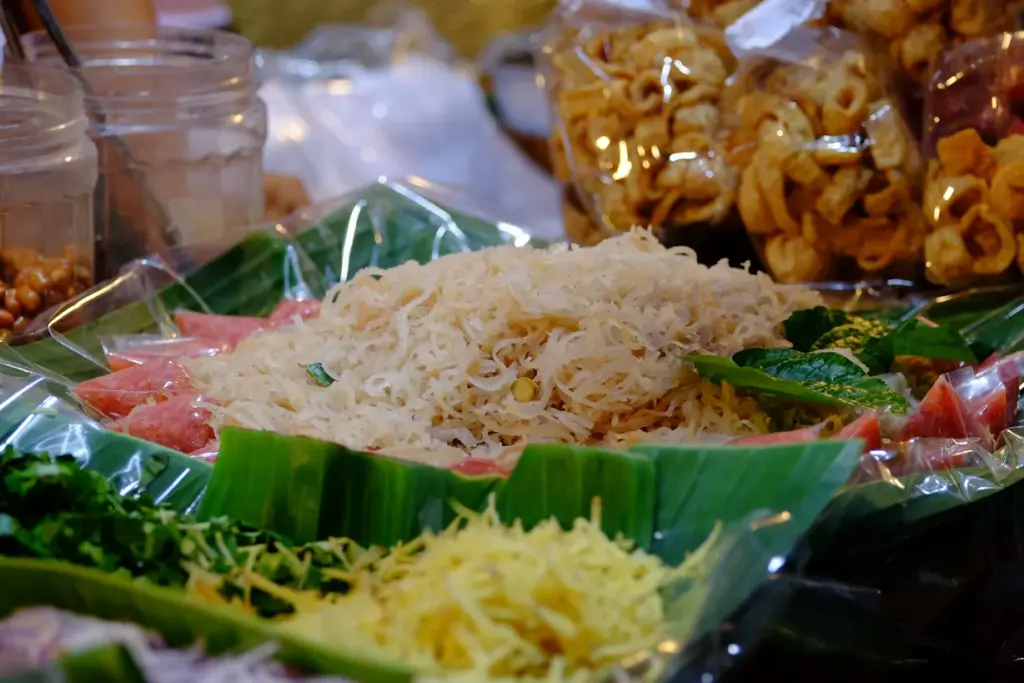Indonesian Cuisine: An Exquisite Journey
Indonesian cuisine is a vibrant tapestry of flavors, textures, and aromas unlike any other. With over 17,000 islands, the archipelago offers a rich culinary diversity reflective of its myriad cultures, traditions, and influences. From street food vendors to high-end restaurants, Indonesia provides a gastronomic experience that is both delightful and unforgettable.
The country’s culinary heritage is deeply intertwined with its history and geography. Indonesian food boasts a unique blend of indigenous ingredients and cooking techniques, enhanced by centuries of trade and migration. Due to its strategic location, Indonesia has assimilated influences from Chinese, Indian, Middle Eastern, and European cuisines, resulting in a delectable fusion of tastes.
The Allure of Nasi Goreng
Nasi Goreng, or Indonesian fried rice, is perhaps the most iconic dish that tourists and locals alike relish. This simple yet savory meal is a symphony of flavors, incorporating sweet soy sauce (kecap manis), garlic, shallots, chili, vegetables, eggs, and often, shrimp or chicken. Each serving of Nasi Goreng is typically garnished with fried shallots and accompanied by a side of pickled vegetables known as acar, giving it a balance of spicy, sweet, and tangy notes.
This dish holds a special place in Indonesian culture, not just as a daily staple, but also as comfort food. Its versatility makes it a perfect choice for breakfast, lunch, or dinner. For an authentic experience, travelers are encouraged to try Nasi Goreng from street vendors known as warungs, where you can savor the aroma and freshly cooked rice right off the wok.
Succulent Satay: A Must-Try Delight
Satay, skewered and grilled meat served with a delicious peanut sauce, is another quintessential Indonesian dish that lures food enthusiasts from around the globe. The meat can range from chicken (Satay Ayam), beef (Satay Sapi), lamb (Satay Kambing), to even tofu for vegetarians. What makes Indonesian satay unique is the succulent marinade, usually a blend of sweet soy sauce, garlic, and spices, making each bite a burst of flavors.
Satay is mostly enjoyed with rice cakes known as lontong or ketupat and a side of sambal, a spicy chili paste that adds an extra kick. This dish is a testament to Indonesia’s mastery of grilling techniques and its love for robust flavors. Eating satay is often a communal activity, making it a perfect choice for family gatherings and social events.
Exploring Regional Varieties
Indonesia’s regional diversity is vividly reflected in its culinary landscape. Each region boasts its own specialty dishes that are sure to tantalize your taste buds. For instance, Bali is famous for its Babi Guling (suckling pig) and Betutu (spiced chicken), while Sumatra’s Rendang, a slow-cooked beef dish, is globally acclaimed for its rich, complex flavors.
In Java, traditional dishes like Gudeg, made from young jackfruit, and Rawon, a black beef soup, offer unique tastes that differ significantly from cuisines found elsewhere in the country. Sulawesi, famous for its seafood, features dishes such as Palumara (fish soup) and Coto Makassar, a hearty beef soup with a distinct blend of spices. Each regional dish is a culinary passport, inviting you to explore and experience the local culture more intimately.
Uncovering the Treasures of Street Food
Indonesian street food is a world of its own, offering a plethora of options that are both affordable and delicious. Street vendors can be found in bustling markets, busy streets, and even small villages, each offering an assortment of snacks and meals that cater to every craving. Popular street food items include Martabak, a savory or sweet stuffed pancake, and Bakso, a comforting meatball soup.
Another beloved street food is Gorengan, which comprises various deep-fried snacks like tempeh (fermented soybean cake), tofu, and bananas. The lively atmosphere of Indonesian street food markets is an experience in itself, filled with the sizzling sounds of cooking and the inviting scent of spices wafting through the air. For food lovers, street food hopping is an adventure that provides a glimpse into the everyday life and culinary creativity of Indonesians.
Desserts and Sweet Treats
No culinary journey in Indonesia would be complete without indulging in its delightful desserts and sweet treats. Traditional desserts often feature rice, coconut milk, palm sugar, and tropical fruits, creating a harmony of flavors that are both exotic and comforting. Klepon, for example, are green rice cakes filled with liquid palm sugar and coated in grated coconut, offering an explosion of sweetness in every bite.
Es Cendol, a popular dessert drink, features green rice flour jelly, coconut milk, and palm sugar syrup served over shaved ice, making it a refreshing treat especially on a hot day. Another must-try is Pisang Goreng, or fried bananas, which can be enjoyed plain or with various toppings like cheese or chocolate sprinkles. These traditional desserts offer a sweet end to any meal and are a testament to Indonesia’s culinary ingenuity.
Spices: The Heart of Indonesian Cuisine
Spices play a crucial role in Indonesian cooking, transforming simple ingredients into extraordinary dishes. The archipelago’s Spice Islands (Maluku) were once the epicenter of the global spice trade, and today, Indonesian cuisine continues to celebrate this rich legacy. Commonly used spices include turmeric, ginger, galangal, coriander, and lemongrass, each contributing to the distinctive taste and aroma of Indonesian dishes.
Sambal, a chili paste made from a variety of chili peppers, garlic, and other spices, is a staple condiment that accompanies almost every meal. The heat and flavor of sambal can vary depending on the region and the ingredients used. For those who love a bit of spice, trying different types of sambal is a thrilling culinary adventure.
Culinary Experiences for Tourists
For tourists, immersing in Indonesian cuisine is an enriching experience that goes beyond just eating. Many cities offer cooking classes where visitors can learn to make popular dishes like Nasi Goreng and Satay from scratch. These classes often include trips to local markets where you can select fresh ingredients and gain insights into traditional cooking techniques.
Food tours are another fantastic way to explore Indonesia’s culinary landscape. These tours are often guided by locals who provide not just taste tests but also stories behind the dishes and the cultures they represent. Whether you’re a food aficionado or just an adventurous eater, these culinary experiences offer a deeper understanding of Indonesia’s rich heritage.
Tips for Enjoying Indonesian Food
When indulging in Indonesian cuisine, it’s essential to keep an open mind and be willing to try new flavors and ingredients. The diversity of dishes means there’s something for everyone, whether you enjoy spicy, sweet, savory, or sour tastes. Vegetarian and vegan options are also plentiful, making it easy for all dietary preferences to be catered for.
Hydration is key, as some dishes, especially those featuring sambal, can be quite spicy. It’s also a good idea to familiarize yourself with common ingredients and dishes before your trip, as this can enhance your dining experience. Lastly, do not hesitate to ask locals for recommendations; they often know the best hidden gems that offer the most authentic flavors.
Conclusion
Indonesian cuisine is a captivating journey through one of the world’s most diverse and enriching culinary landscapes. Each dish tells a story, reflecting the rich cultural heritage and history of this beautiful country. From the beloved Nasi Goreng to the succulent Satay, and the myriad of regional specialties, there’s always something new and exciting to try.
As you explore Indonesian cuisine, you’ll not only satisfy your palate but also gain a deeper appreciation for the country’s traditions and way of life. So pack your bags, bring your appetite, and get ready for a culinary adventure that promises to be as vibrant and diverse as Indonesia itself.



